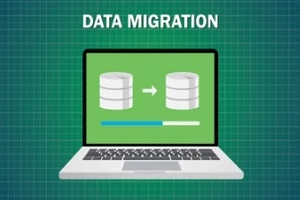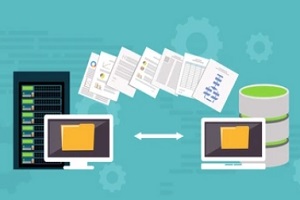Updated on: 3/26/2025
Key Takeaways
- Migration Necessity and Benefits: Database migration is becoming essential for business optimization, offering benefits like reduced overhead, enhanced security, and improved performance. Moving to cloud-based systems provides additional advantages including scalability, faster disaster recovery, and centralized data access.
- Types and Challenges: Different migration types (Application, Storage, Data Center, Business Process) serve various organizational needs, but each comes with specific challenges including data corruption risks, security concerns, and dealing with siloed databases, requiring careful planning and execution.
- Implementation Process: Successful database migration requires a systematic approach including thorough assessment, team assembly, proper tool selection, and careful execution through steps like schema rebuilding and security setting migration, while maintaining data integrity throughout the process.
Adopting emerging technologies is an effective way for organizations to improve their performance, reduce overhead expenses and enhance security. One of the best ways to achieve these goals is through database migration. Moving an outdated or legacy system to the cloud is a complex, multi-step process that can sometimes be unpredictable.
Tools such as the AWS Database Migration Service (AWS DMS) help automate many phases of the database migration process but it is still important to have a solid understanding of what to expect. Before starting the database migration process, there are several things to consider.
What Is A Database Migration?
Database migration refers to the moving of data from one platform to another. This process involves several key steps, including an assessment, database schema conversion, data migration, script conversion, performance tuning and similar phases.
Consider the schema and code conversion to identify what type of database migration to use. Heterogeneous database migration refers to the migration of data between two database platforms, such as an Oracle database to a MySQL database. Homogeneous database migration refers to the migration between two databases built using the same technology, such as an Oracle database to an Oracle database.
Why Do Businesses Need Database Migration?
 There are many reasons why businesses choose to undergo database migration. Database technologies are constantly being updated and improved. Businesses must update their outdated database systems to meet current database requirements and maintain a competitive edge.
There are many reasons why businesses choose to undergo database migration. Database technologies are constantly being updated and improved. Businesses must update their outdated database systems to meet current database requirements and maintain a competitive edge.
Businesses may also choose to move their on-premises database to the cloud. Moving to the cloud can offer a host of benefits, such as greater security, scalability and speedier disaster recovery. The cloud also saves businesses time and money, while enabling remote work and collaboration.
Moving a database to the cloud can also result in a faster time to market. With the cloud, businesses can quickly move their new or existing applications directly to market, in comparison to the days or weeks it would normally take with an offline operation. Businesses can also enjoy the high rate of reliability and consistency that cloud providers offer customers.
One of the biggest benefits of database migration is the decrease in redundancy. Moving all data to a centralized location can help limit redundant data and easily allow people from all divisions of the business to access the most accurate and up-to-date information.
What Are The Different Types Of Data Migration?
Data migration provides businesses with ample opportunities to streamline their processes and accelerate their growth. There are several different types of data migrations used by organizations, including the following:
1. Application Migration
Application migration is the process of moving applications from one operating environment to another. This type of data migration is most often used when a company changes an enterprise software vendor. One of the biggest challenges with application migrations is that the new and old infrastructures may contain unique data models that work with different data formats.
2. Storage Migration
Storage migration is when a business transfers data from one storage device to another, such as moving between hard disks. There is always a risk that electronic media could ultimately fail. Before this happens, businesses must take the necessary measures to move their data onto new media. One of the best times to complete this process is during technology updates when it becomes easier to introduce data protection features, such as cloning.
3. Data Center Migration
A data center refers to a physical infrastructure used by businesses to retain their critical applications and data. Data centers typically contain a variety of equipment, such as networks, servers and switches. Data center migration can refer to several different actions, such as relocating existing computers to another premises or moving all digital assets, including business applications, to new storage or servers.
4. Business Process Migration
Business process migration is a type of migration driven by mergers and acquisitions. A data transfer is generally needed for any movement from one database or application to another. This type of data migration relates directly to an organization’s business practices and is typically orchestrated by business management tools that may need to be updated or replaced in the event of a merger or acquisition.
How Long Do Database Migrations Usually Take?
 It can be difficult to determine exactly how long a database migration will take from start to finish. The answer is dependent on a wide range of factors; however, it can be helpful to know what factors influence migration time.
It can be difficult to determine exactly how long a database migration will take from start to finish. The answer is dependent on a wide range of factors; however, it can be helpful to know what factors influence migration time.
First, consider how much data is being transferred. The more data being transferred, the longer the migration will take. Also, consider how the data will be moved. Some businesses may choose to transfer data via a network and will need to ensure that the available bandwidth will support the connection.
Another factor that can influence migration time is how much data transformation is required. The more transformation that a business has to do, the more that they will need to rely on manual processes for transmitting data, resulting in a prolonged migration.
What Challenges Are Involved In Database Migration?
Database migration presents certain challenges that could lengthen the migration time or cause disruptions during the process. Fortunately, proper planning can help minimize the risk of problems during database migration. Some of the most common challenges that can be avoided include:
Finding Siloed Databases
Companies that have been established for many years often have numerous disparate databases within the business. These may be present in different geographies or even in different departments. Before starting a database migration, it is important to locate these disparate databases and plan how the data will be normalized and how to convert schemas.
Data Corruption Or Loss
There is also a risk that data could become corrupted or lost during database migration. Businesses must develop a solid plan of how they will test for data corruption or loss during the move. The plan should also include how any corrupted or lost information will be recovered after the migration has been completed.
Security Problems
Another common challenge that businesses often face in connection with database migration relates to security. When data is moved from one platform to another, it is critical to ensure that the data remains secure. This can be achieved in a variety of ways, such as by encrypting the data or removing any personally identifiable information.
How Is A Database Migration Performed?
The database migration process involves several important steps, including the following:
1. Assess The Data Environment
The first step in database migration involves understanding what the business is currently working with, including possible risks or challenges it faces. By gaining a solid understanding of potential obstacles, businesses will be better equipped to handle disruptions during migration. Size the database to determine how much storage will be needed after the migration and assess all applications to ensure that they are compatible with the target platform.
2. Gather An Internal Team
Having a dedicated team of skilled professionals is key during database migration. Acquire feedback from professionals in every department throughout the organization to ensure that no aspects are overlooked. Be sure to assess the team’s personal workloads to avoid overscheduling issues that could interfere with the migration.
3. Select Migration Tools
Modern businesses have access to a wide range of migration tools that can prove useful while planning and performing a database migration. The appropriate tools can be used to automate the most time-consuming or tedious tasks and help streamline the entire process. Some tools can also be used to remove personally identifiable information and detect errors that may develop during the migration.
4. Deploy A Proof Of Concept
After identifying risks and challenges in the data environment, deploy a proof of concept to help work through these issues. A proof of concept can provide businesses with greater assurance that their migration will be successful.
5. Review The Data
Businesses should perform a thorough review of all data prior to the database migration. If necessary, reclassify the information to help maintain the integrity of existing compliance and security controls. The review and reclassification of data at this stage may require the involvement of legal and compliance teams within the business.
6. Rebuild The Database Schema
 Before progressing with the database migration, the current data schema will need to be converted to one that supports the new database. This process will generally involve creating tables and scripts for various functions, such as database triggers or stored procedures.
Before progressing with the database migration, the current data schema will need to be converted to one that supports the new database. This process will generally involve creating tables and scripts for various functions, such as database triggers or stored procedures.
7. Migrate The Data And Review Again
Depending on the size of the database, businesses can expect the process to take hours or possibly days. Throughout this process, the data will be transformed and normalized. Once it has been loaded, check the data again to ensure that it is accurate and complete. Address any issues at this phase before moving forward.
8. Migrate Security Settings And Access Privileges
Do not overlook the importance of cybersecurity during a database migration. Take the time to duplicate all security settings and access privileges in the new environment to keep the data safe and out of the hands of cybercriminals.
Speak With A Custom Software Development Company About Database Migration
Database migration can be a complex process, especially for businesses that have never performed one before. Before getting started, gain a solid understanding of what strategies will be used and how the business will address any problems that occur during the migration.
Preventing data loss is one of the biggest goals of database migration; with the proper plan in place, this goal can be easily achieved. To learn more about what organizations should consider before a database migration, or to speak with a custom software development company, contact the IT experts at Orases.






